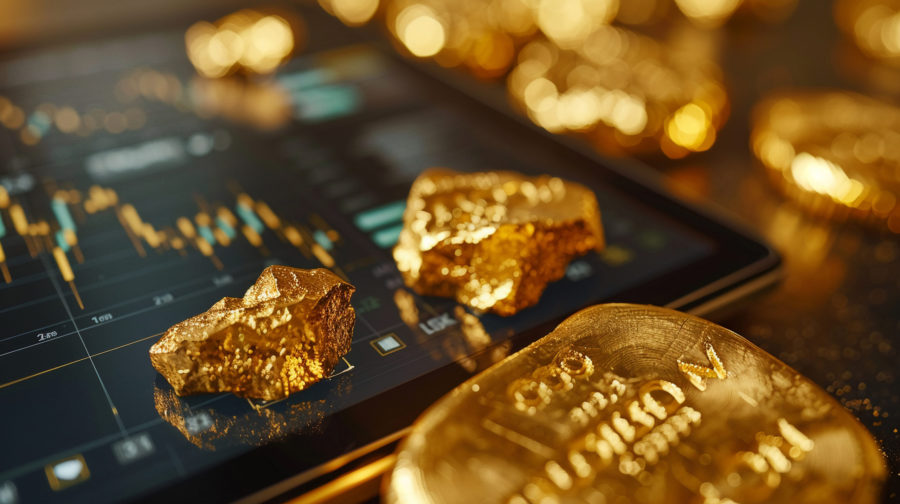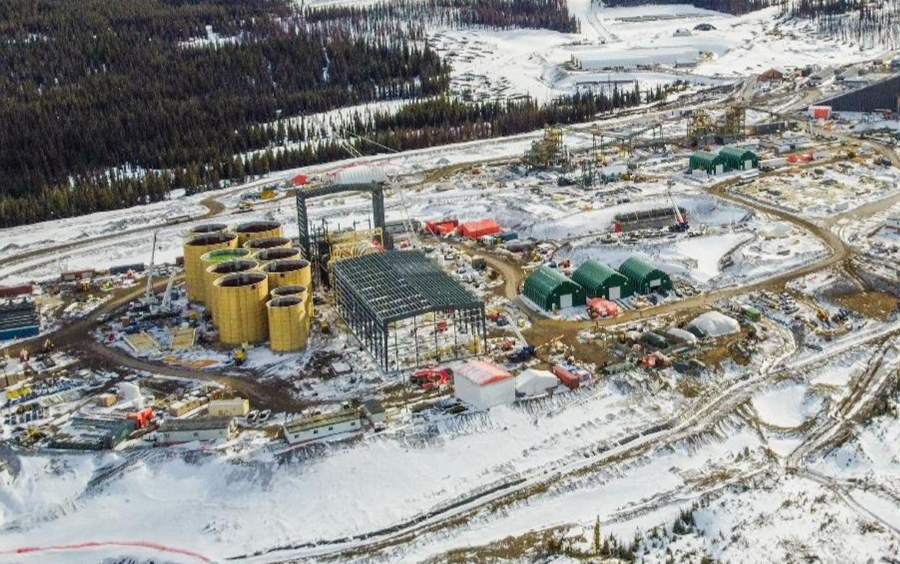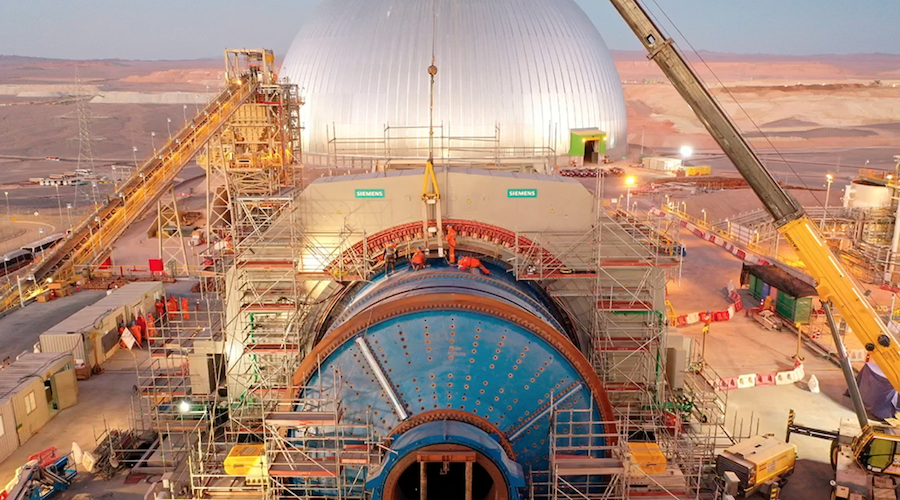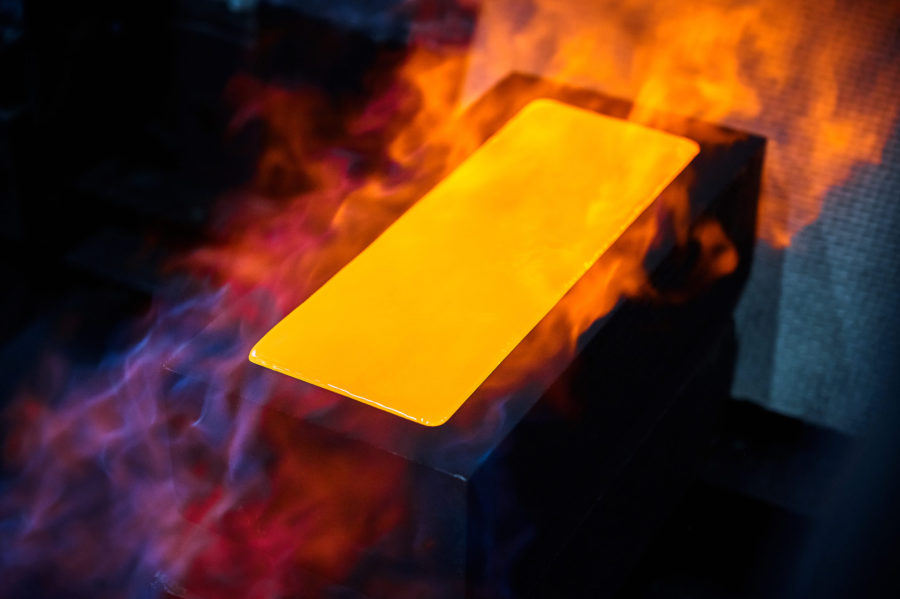The Gold Report: Let us be brutally frank, Lawrence. Is investing in gold dead as a reasonable investment strategy?
Lawrence Roulston: No, not at all. Gold is headed higher in the medium term and the long term. There will still be a lot of volatility at play during the short term, but gold will continue its uptrend of the last 13 years. It is highly speculative to bank on near-term appreciation in value. That approach can be incredibly frustrating when the price is volatile. But the long-term perspective is a different matter. Gold is always going to have an intrinsic value.
“True Gold Mining Inc. has a great asset with near-term production potential.“
Think about the big selloff in paper gold last year. People were lining up to buy physical gold as investors were dumping exchange-traded funds and paper gold on the market. But central banks are still net buyers of gold. China is emerging as the biggest buyer at both the consumer and the central bank level. Gold has been the mainstay of financial systems for more than 5,000 years!
TGR: What is the current relationship between physical gold and paper gold?
LR: At one level, the pricing is identical because paper gold matches the physical gold pricing. But, these two forms of yellow metal ownership are held by very different groups of people. Paper gold, especially over the last few years, has been primarily held by North American short-term speculators. Physical gold is more of a long-term holding. Europeans who are concerned about the long-term viability of euro-denominated assets are holding on to physical gold as a store of wealth, as protection. China is now vying with India as the largest market for physical gold.
“Pretium Resources Inc. has a large, high-grade deposit in a favorable jurisdiction.“
TGR: Can you quantitatively model long- and short-term gold cycles?
LR: Predicting the gold cycles is challenging because so many interrelated factors influence the movement of gold prices. To a very large extent, the short-term price moves are emotional—driven by news, by headlines, by rumors and gossip. But even when one takes a medium- or a longer-term perspective, there are still huge numbers of variables. It is very difficult to model gold. I consider taking ownership of bullion or the paper equivalent of bullion as more of a speculation than a surefire investment—unless one considers gold to be a long-term store of wealth.
Every time the gold price runs up and then falls off, people say, “It’s over for gold. This is no longer a viable commodity. It’s a relic of the past.” Then gold takes off again. Gold prices will always run in short- and long-term cycles. And the long-term trend points upward.
TGR: Is gold a true hedge against inflation?
LR: The short-term downswing in the gold market is largely driven by the emergence of a low inflation environment in the near term. And the outlook for inflation remains low to modest. There is no hint of runaway inflation in America or Europe. In Japan, interestingly, the rate of inflation is notching up at the low end, but that is where the Japanese bankers actually want to see a bit of corrective inflation.
Of course, in two, three or four years, the global status quo for gold prices could change quite dramatically. But hedging against inflation is not the only reason for owning gold as a store of value. It is also appropriate to protect wealth against nonfinancial or non-currency related factors. For example, a large part of the boom in gold ownership in China is tied to investors searching for hard assets as they exit the overheated real estate market.
TGR: You recently made a presentation at the Mines and Money conference in London. What was your message?
LR: The take-home message is that the resource market is notoriously cyclical. It’s a no-brainer to buy at the bottom of the cycle and sell at the top of the cycle. While we may not be exactly at the bottom, we are close enough that now is a good time to buy gold and gold equities. I noted that there are a significant number of buyers in the market who at this stage are quietly accumulating.
“Wellgreen Platinum Ltd. is now looking at one of the most attractive, undeveloped platinum deposits on the planet.“
The higher-quality junior companies in the sector are starting to see a strong level of support at their current prices and many of them are notching higher. The professionals who are most familiar with the resource markets understand the cyclical nature of these markets and, more important, they know how to differentiate among the 2,000 publicly traded junior companies.
The risk is in failing to get into the market before it is too late to win big. If an investor waits for a clear signal that the market has bottomed, the good quality companies will already have moved up substantially. At that point, wannabe investors will be forced to pay high prices for the quality companies or, worse, to buy second-tier companies thinking they are getting a bargain.
TGR: How do you decide which junior precious metal firms to buy or hold or sell in the current environment?
LR: The most important thing is that a company has a quality asset. In this market, a junior needs to have a deposit, ideally an advanced-stage deposit. Investors are more risk averse now than normal. They want to see something tangible and real that they can put a hard value on. I am focused on companies that are drilling a reasonably large deposit with a good grade that can generate a decent return in the current metal price environment. Grade is very important; it will be some time before the huge low-grade deposits that were once all the rage will come back into vogue.
TGR: What about firms that have really good management and a lot of potential, but do not control a quality asset yet?
LR: We are in a hunter’s market. Companies with good management and cash in hand are going to be making some very value accretive acquisitions in the very near term. Everybody wants to control at least one deposit. The focus now is on companies that are adding shareholder value aside from moves in the metal prices.
TGR: Can you give us some ideas?
LR: True Gold Mining Inc. (TGM:TSX.V) is a tremendous example of what’s happening in the market. The company has a great asset with near-term production potential and a very strong management team that raises money. Its stock is trading at a very low value relative to what this kind of quality asset was trading at before the last couple of years. True Gold is precisely the kind of company that will be sought after by people in the know. On the other hand, True Gold is determined to build a mine on its own and it certainly has the capability of doing that. Management has scaled back its development plan to a level that a junior can self-finance.
TGR: They are not crybabies?
“Lion One Metals Ltd.confirmed the presence of a very substantial area with a high-grade gold occurrence.“
LR: A lot of companies are claiming that it is difficult or impossible to raise money in the junior resource market. Not true at all. In fact, there is an enormous amount of money sitting on the sidelines evaluating companies and looking to make a move. That money almost to a penny is aimed at producing or near-term producing situations. A large part of it is private equity looking for near-term or current cash flow. True Gold will find financing because it has a quality management team and a good asset with production in sight.
TGR: What other companies are you following?
LR: Pretium Resources Inc. (PVG:TSX; PVG:NYSE) has a large, high-grade deposit in a favorable jurisdiction. The company’s challenge is that the gold distribution within the deposit is very erratic. It has found spectacularly high-grade intercepts in the drilling, and the bulk sample confirmed the grade is there. Pretium needs to convincingly average its high-grade points across a larger bulk of material that can be mined. The challenge is for the engineering firms involved to agree on an approach that allows Pretium to project drilled samples across the larger volume of material. The results of the bulk sample were better than predicted, but the challenge is getting to a suitable level of confidence by averaging across the entire volume.
TGR: Is there any reason to buy Pretium right now?
LR: Pretium’s price recovered fairly strongly after it announced results for the first part of the bulk sample. The engineers are now working with those numbers. There is a lot of upside potential here. Nobody doubts that there is a lot of gold in the ground. But it is necessary to be able to predict the distribution of gold within the deposit in order to develop a reliable mine plan. That will be done; it’s just a matter of how long it will take to finish.
TGR: Do you have any picks in the platinum space?
LR: Within the precious metal realm, platinum has very favorable economics, even better than gold. Platinum is primarily an industrial metal and its fundamentals are very positive. There are not a lot of platinum companies to choose from. I particularly like Wellgreen Platinum Ltd. (WG:TSX.V; WGPLF:OTCPK;). The company’s new management team has re-evaluated what was previously seen as a large, low-grade nickel-copper deposit. Now, that type of deposit often has platinum associated to it. Wellgreen re-thought its geological approach and re-assayed a lot of the old drill core. Then, it drilled new holes and confirmed its new geological interpretation: It is now looking at one of the most attractive, undeveloped platinum deposits on the planet.
TGR: What is going on for precious metal juniors in Asia?
LR: There is a great company in Fiji called Lion One Metals Ltd. (LIO:TSX.V; LOMLF:OTCQX; LY1:FSE). It recently bought a deposit that had been evaluated about a decade ago by a company that was operating a nearby mine. The previous company had planned to develop the deposit as a satellite. But the main mine went bankrupt and the situation was tied up for years until the Lion One group bought the deposit. Lion One has re-evaluated the old drill core and by re-assaying it found significant intervals of gold that had not been picked up in the previous round. It has drilled quite a number of new holes and confirmed the presence of a very substantial area with a high-grade gold occurrence. It is moving toward permitting and developing a new mine.
TGR: What about Mexico?
“Some companies achieved fantastic success by developing past-producing silver mines;Santacruz Silver Mining Ltd.fits that trajectory.”
LR: Our Resource Opportunities newsletter has had huge success covering the early days of First Majestic Silver Corp. (FR:TSX; AG:NYSE; FMV:FSE) andEndeavour Silver Corp. (EDR:TSX; EXK:NYSE; EJD:FSE). We are now looking for companies following a similar path. Santacruz Silver Mining Ltd. (SCZ:TSX.V; 1SZ:FSE) fits that trajectory. Remember, First Majestic and Endeavour achieved fantastic success by developing past-producing silver mines and then bringing subsequent mines on with a strong operating team. Santacruz has four silver deposits with past production. The company has now brought the first mine into production. It has started development on the second deposit and the other two are in the pipeline.
I really like the model of looking at past-producing mines with a data set in place. For example, Cayden Resources Inc. (CYD:TSX.V; CDKNF:NASDAQ) has optioned a Mexican property from a major that was not quite able to put all the pieces together for a district-scale play. Cayden is coming up with very good results that support the idea that there are a number of significant gold deposits along what could become a very substantial trend.
Another firm looking at past producers for redevelopment is Western Pacific Resources Corp. (WRP:TSX.V) in Utah. The company has the Deer Trail mine with a production history spanning more than 100 years. There is already a mill in place. Western Resources just announced a financing package intended to bring that property back into production. In fact, I recently worked with a U.S. private equity group to put the Western Resources package together. There is a really interesting twist to it: base metal streaming.
TGR: Please explain the nature of this streaming.
LR: Most investors in the precious metals sector are familiar with Silver Wheaton Corp. (SLW:TSX; SLW:NYSE) and its silver streaming strategy. Streaming is fronting the cash to buy the right to the output of a particular metal over the life of a mine. Silver Wheaton has put up billions of dollars to assist a large number of companies to bring their mines into production or to expand existing operations.
“Cayden Resources Inc. is coming up with very good results that support the idea that there are a number of significant gold deposits.“
This private equity group is doing it from a different perspective: It looks to stream only the byproduct—the base metals production—of a precious metal company. The company gets access to capital and is able to keep control of its precious metal production. The public companies in this space get a higher multiple on income from precious metals than they do on income from base metals. Streaming is basically a value creating mechanism.
TGR: Who else does this?
LR: A number of private equity groups are looking at doing it. But we have not seen any other transactions of the type that we did with Western Pacific Resources—streaming a byproduct from a precious metal-dominant mine. Sandstorm Metals & Energy Ltd. (SND:TSX.V) streams, but its deals access the dominant base metal stream.
TGR: Any final thoughts about gold today?
LR: The message for the non-crybabies is that the resource market is notoriously cyclical and it makes a whole lot of sense to come in at the bottom of the cycle. Evidence is mounting that we are close enough to the bottom of the gold cycle and the resource market cycle that this is a good time to acquire shares in the best quality junior companies.
TGR: Have a good day, Lawrence.
LR: Thank you.
Lawrence Roulston is an expert in the identification and evaluation of exploration and development companies in the mining industry. He is a geologist, with engineering and business training, and more than 30 years of experience in the resource industry. He has generated an impressive track record forResource Opportunities, a subscriber-supported investment newsletter. Roulston has launched an investment fund, the Metallica Development Fund, to take advantage of severely oversold positions in high-quality resource companies. The focus of the fund is on companies with production and/or advanced-stage exploration and development projects—companies with potential for near-term recovery in value that also have potential for longer-term growth.

 Geologist, engineer, Midas-touch investor and financial newsletter publisher Lawrence Roulston has little patience for investors without the nerves to hold onto a good thing during tough times. Gold has been the main embodiment of value for thousands of years, Roulston points out, so why should tomorrow be different? In this interview with
Geologist, engineer, Midas-touch investor and financial newsletter publisher Lawrence Roulston has little patience for investors without the nerves to hold onto a good thing during tough times. Gold has been the main embodiment of value for thousands of years, Roulston points out, so why should tomorrow be different? In this interview with 


